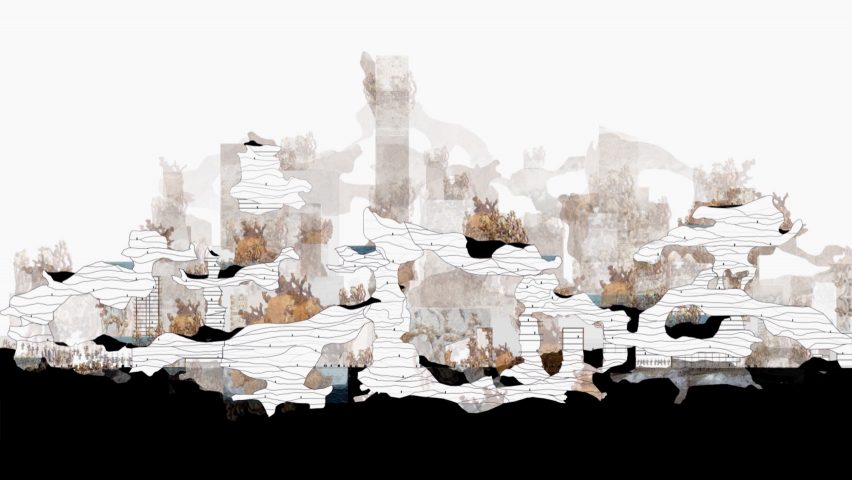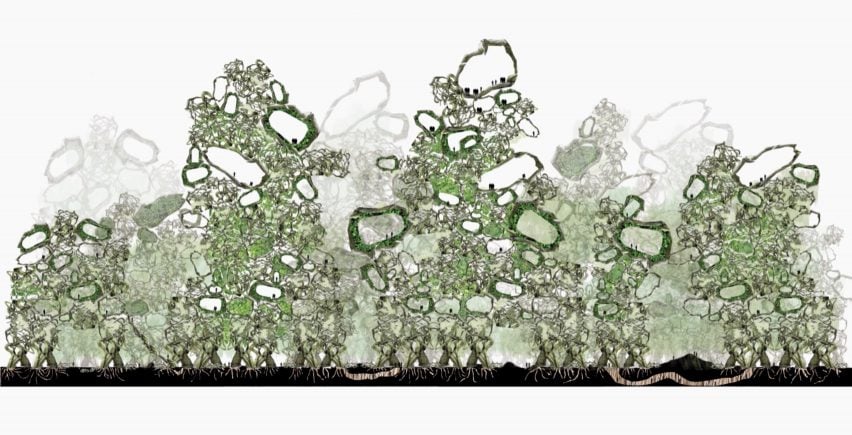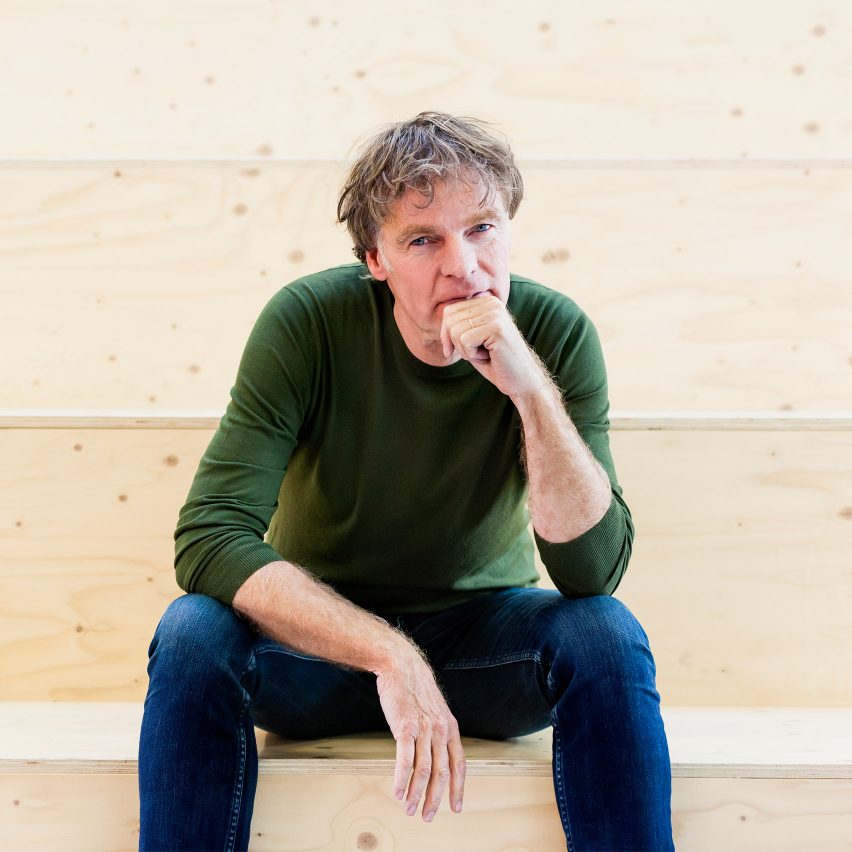
"What if we create a new layer on the Earth that incorporates growing human habitation and consumption?" asks Winy Maas
In his manifesto for the Dezeen 15 digital festival, architect Winy Maas of MVRDV proposes covering the planet with a new inhabitable geological layer called The Sponge.
Constructed from the detritus of the Anthropocene era, The Sponge would be a giant, multilayered biostructure capable of nurturing both people and planet.
The Dezeen 15 festival features 15 manifestos presenting ideas that could change the world over the next 15 years. Each contributor will also take part in a live video interview.
See the line-up of contributors here and watch the live video interview with Maas here.

The Sponge: towards a dendrocene
Earth. Our home. For the infinite future, I hope. Earth contains all known life in the universe, as far as we are aware.
But our home is threatened: climate breakdown, population growth, deforestation, pollution, income and wealth disparities, lack of pure water, health problems, the enormous reduction of biodiversity – just to name a few – are accelerating tremendously.
We know that. And yet still we need to repeat it. These challenges demand action and, maybe more than ever, imagination. And somehow, architecture and urban design are better tools for this than we think.
French surrealist poet Paul Éluard once wrote that "there is another world and it is in this one". The idea of the Anthropocene has captured people's imagination in recent years – the idea that humans have created a new layer in the geology of the Earth.
What if we started to think of these new geological layers as a design challenge?
What if we started to think of these new geological layers as a design challenge? Instead of waiting for a result of human habitation, what if we create a new layer on the Earth that incorporates growing human habitation and consumption while acknowledging humanity's current dominance, balancing its effects and combining that with natural development?
OK. Let's picture ourselves in a completely biological, three-dimensional substance – let's call it a city for now – that spans across borders. A substance that is porous for access, openness, and views. For water management, for growth, adaptability, and the unknown. For shadow that allows it to protect itself against climate change. That cools down instead of warming up. A substance that makes greenery, energy, food, life, biodiversity. That consists of self-growing, self-evaluating and self-learning bio-techniques that enable it to adapt over time. A sponge-like matter that enables us to solve our world's crises.
The Sponge is first and foremost about density. Where there are the most people, The Sponge reaches its maximum thickness – its maximum three-dimensionality. Unlike our current cities, which rely mostly on the ground level for horizontal movement, The Sponge is interconnected at many levels upwards and downwards, eating ourselves into the earth, allowing it to reach population densities we haven't seen anywhere before.
Public spaces, parks, farms and forests, transit, routes through the city – these things can all be found equally as easily at a height as they can on the ground. The latest technologies intensify the needed agricultural production into multi-storey mixed food forests. These reduce the demand for agricultural land and shorten the transportation distance from farm to fork. The plants capture, store, and evaporate enough water to regulate the environment of The Sponge.
For the next 15 years, every small step towards something like The Sponge will be a victory.
The Sponge can grow and can be dismantled or can dismantle itself. It can be formed where needed. Adapting itself to demand, and to any location.
The Sponge overcomes borders. It is premised on porosity and accessibility. It makes boundaries and borders absurd. It demonstrates the superiority of biology, adaptability, freedom, cooperation and sharing. Without borders, and with easy, ecological, yet super-fast transit, people can move more freely than ever before. This creates a sustainable capacity for our planet.
The question posed for this article was to present the idea that will have the biggest impact on the world in the coming 15 years. At this point, probably some readers are reading with incredulity. Do I expect us all to live in a global megastructure city by 2036?
Much as I would like to say yes, I do not. Maybe by 2136, I hope. Yet it is one of my deepest held beliefs that ideas, even as-yet-unrealised ideas, can deeply impact our world.
And sometimes big dreams, no matter how unachievable they might seem, can have a bigger effect than small, easily-achieved goals. For the next 15 years, every small step towards something like The Sponge will be a victory.

Dutch architect Winy Maas is co-founder and director of Rotterdam studio MVRDV and head of The Why Factory, a research laboratory and think tank he co-founded with the Faculty of Architecture at Delft University of Technology.
Find out more about Winy Maas ›